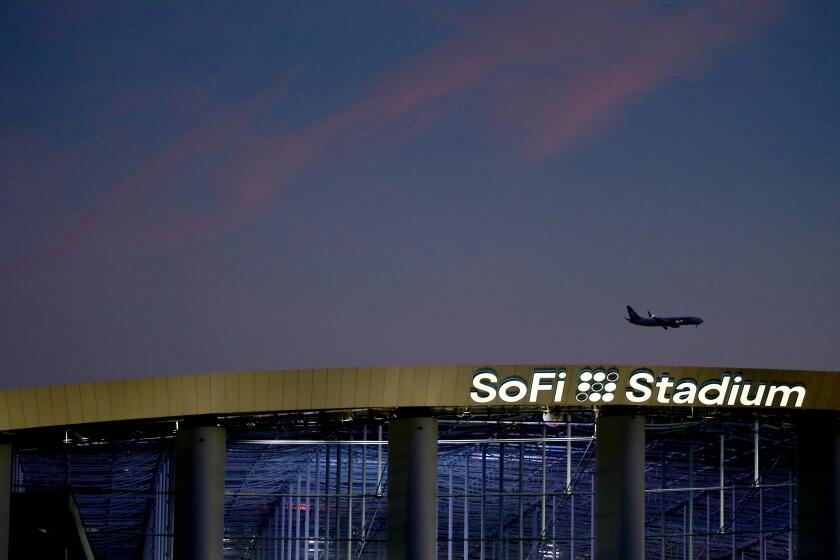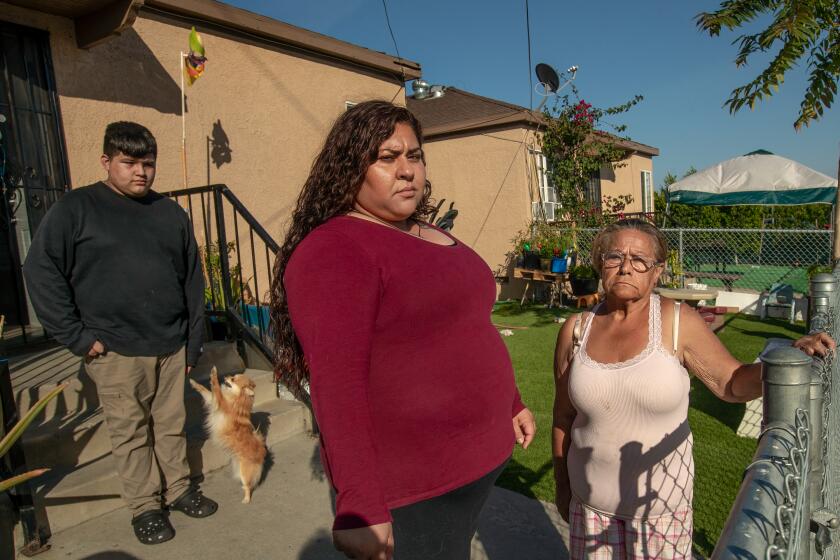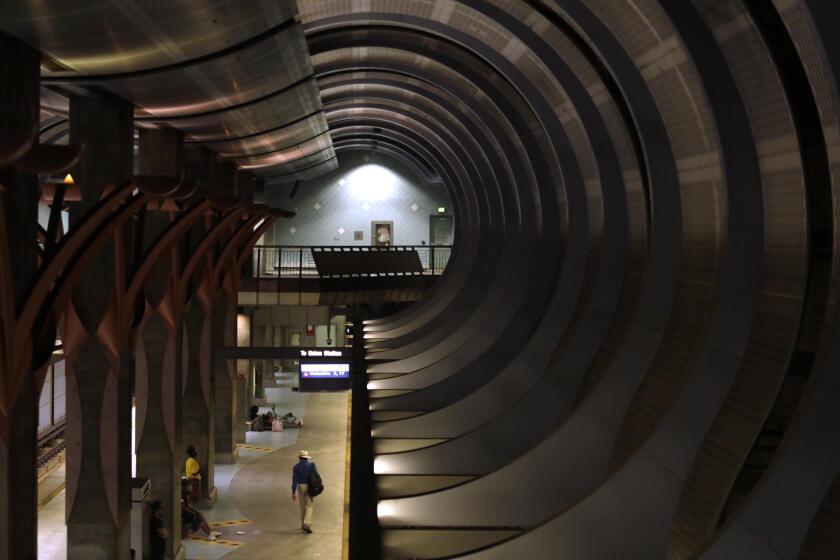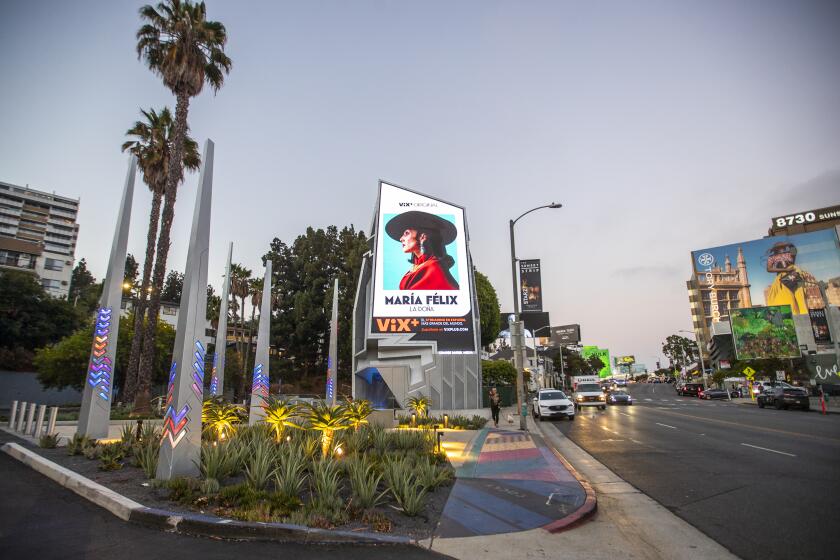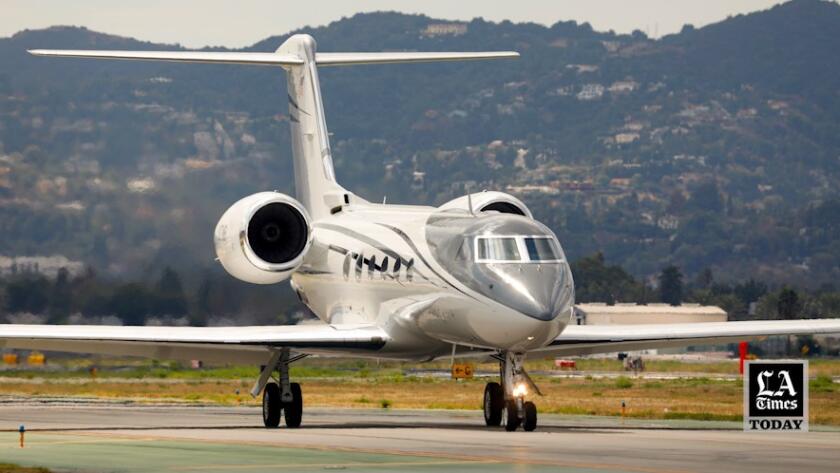
“You wanna take mine or yours?” That was Kylie Jenner’s caption for a July Instagram post that showed her and boyfriend Travis Scott in the middle of a make-out sesh between a pair of private jets.
It was a simple question. The response was withering.
Jenner’s post was greeted by an avalanche of criticism about the ways the 1% are incinerating the environment. Time magazine included her in a roundup of the most egregious celebrity overconsumption. An article in the Washington Post described celebrity jet usage as “a climate nightmare,” adding to the pillory other jet owners such as Taylor Swift and Drake. The best response, however, was a TikTok from user @unabella3 that shows a squadron of military jets blasting through the sky along with the deadpan caption: “The Kardashians on their way to Starbucks.”
These reactions aren’t simply haters hating. A widely cited 2021 report by Transport & Environment, a Brussels-based clean transportation advocacy group, notes that a private jet can emit 2 tons of carbon dioxide in a single hour — less than a quarter of what an average European emits in an entire year.

Subscribers get exclusive access to this story
We’re offering L.A. Times subscribers special access to our best journalism. Thank you for your support.
Explore more Subscriber Exclusive content.

Reality star and beauty mogul Kylie Jenner got heat for taking a 17-minute flight last week, then posted a gutsy photo with her private jet a few days later.
For most of us, the story of Jenner’s jet flaunting might elicit a flash of outrage, followed by the helplessness that comes with thinking about our ongoing climate catastrophe, a problem so vast and so systemic that it can feel practically abstract.
For people who live in the environs of the Van Nuys Airport, however, it is not abstract. In preparation for a flight, a single jet might run its engines for more than an hour on airplane ramps separated from residential streets by little more than a low wall and chain-link fence. While the Jenners of the world selfie on the tarmac, residents who live yards away are eating their dust — or, more accurately, their ultrafine particles (a pollutant emitted during jet operations that has been linked to various cardiovascular and respiratory conditions). Eliminating a few private jet takeoffs isn’t going to change the fate of the planet. It would, however, improve life on the ground for communities in the vicinity of VNY (as the airport is known by its call letters).
In the L.A. area, VNY is far from the only general aviation airport. (That’s an airport intended for public use without scheduled commercial service.) But it is the busiest — not just in L.A., but in the country. And its location in one of L.A.’s denser urban areas, with half a dozen elementary schools less than a mile from the tarmac, makes it one of the most disruptive.

Small airports in Santa Monica and Hawthorne are close to the ocean, which serves as a buffer; Van Nuys is not. Moreover, its proximity to Hollywood Burbank Airport, eight miles to the east, puts the area within a crucible of airplane traffic in the heart of the San Fernando Valley, which for much of the year is a hot, unventilated bowl.
And, unlike those other general aviation airports, VNY’s private jet traffic has exploded — saturating some neighborhoods in gassy smells and battering much of the southern San Fernando Valley in constant racket. In Lake Balboa, the residential community that borders the airport to the west, off Hayvenhurst Avenue, the waft of jet fumes has become a part of daily life. In the part of Van Nuys that borders the airport to the east, the roar of jet operations puts a regular pause on conversation. The noise is also affecting tonier communities in the hills, including Sherman Oaks, Encino and Woodland Hills.
“I’ve lived here since 1986 — never had a problem,” says Sue Steinberg, who lives just off Hayvenhurst. But over the last several years, she says, it has become intolerable. “The fumes are unbelievably bad.”
That is no exaggeration. Over the course of several months, I’ve made repeated visits to the neighborhoods around VNY. On a busy Friday afternoon in July — during which the Twitter jet-tracking bot @CelebJets told me that A-Rod had landed at the airport — I spent several hours in the residential area off Hayvenhurst known as “the pocket.” Here, airplane hangars harboring Gulfstream jets are visible from front yards. The smell of fuel grew so intense at one point that it sent me fleeing for the refuge of my car.
One area resident, who declined to give me her name because she was planning to move out of the neighborhood, says jets have upended daily life. “I can’t let my son out,” she says. “When the fumes come out, I have to bring him inside.”
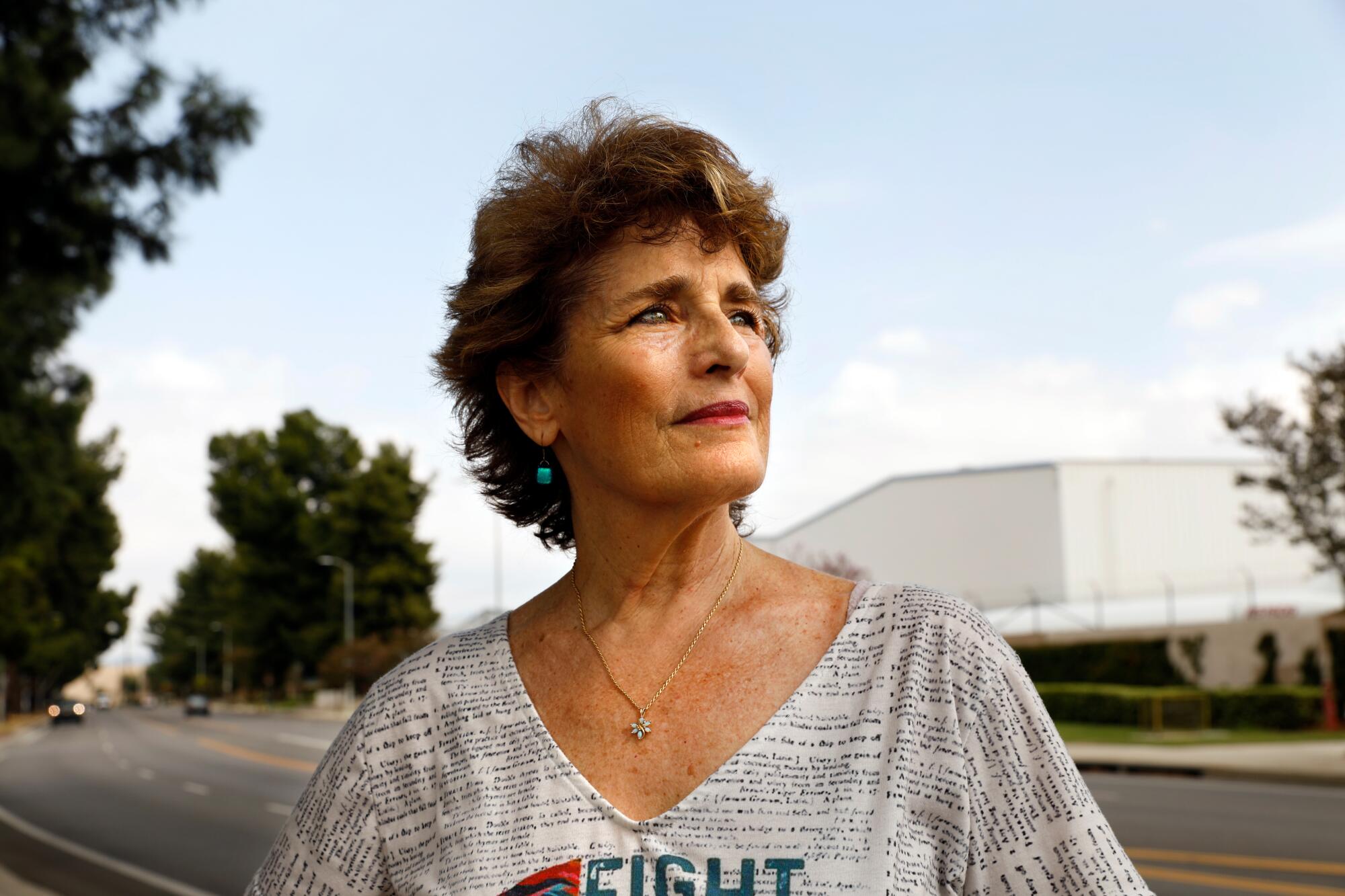
Frustration is rising alongside the number of private jets that now use VNY — an airport that wasn’t initially designed with this kind of jet traffic in mind.
When VNY opened in 1928 (as Metropolitan Airport), this section of the Valley consisted largely of fields, and the primary mode of air travel was biplanes with all the horsepower of a Ford Focus. During World War II, the airport became a vital defense manufacturing and testing site. (It was also used as a location for the opening scene in “Casablanca.”) After the war, it became a home for National Guard aircraft. Since the late 1950s, when it formally changed its name to Van Nuys Airport, it has met a mix of aviation needs — including serving as a training site for area flight schools and as a base for police, fire and news helicopters.
By 1971, it had earned the title of busiest general aviation airport in the country. Over time, it has also become a not insignificant generator of income. A 2015 economic impact analysis published by the Los Angeles County Economic Development Corporation noted that VNY supplied nearly $65 million in tax revenue to the state and more than $40 million to L.A. County. (Which is why it emerged as a territorial pawn in the scandalous leaked audio that led to the resignation last week of City Council President Nury Martinez; the airport was in her district.)
The economic impact reports do not take into account environmental impact — never mind the question of who benefits most from an airport that serves the private jet set.
Jets have been part of the general aviation equation since the ’60s, when private planes such as the Learjet came onto the market. But a combination of factors have swelled their ranks. Fractional ownership and private charters have made it easier to fly privately without acquiring a jet, and by-the-seat charters — on which you can buy a single seat, just as on a commercial flight — have made it ever more affordable.
COVID-19 has only intensified this trend. According to the Robb Report, the private jet industry saw a 300% year-over-year increase in first-time fliers in 2020, the first year of the pandemic.
So far, 2022 has been “a record year” for global business jet traffic, says Richard Koe, a managing director at the data research firm WingX. Internationally, the number of monthly private jet flights grew by 16% between August 2019 and August 2022, from more than 260,000 per month to more than 300,000.
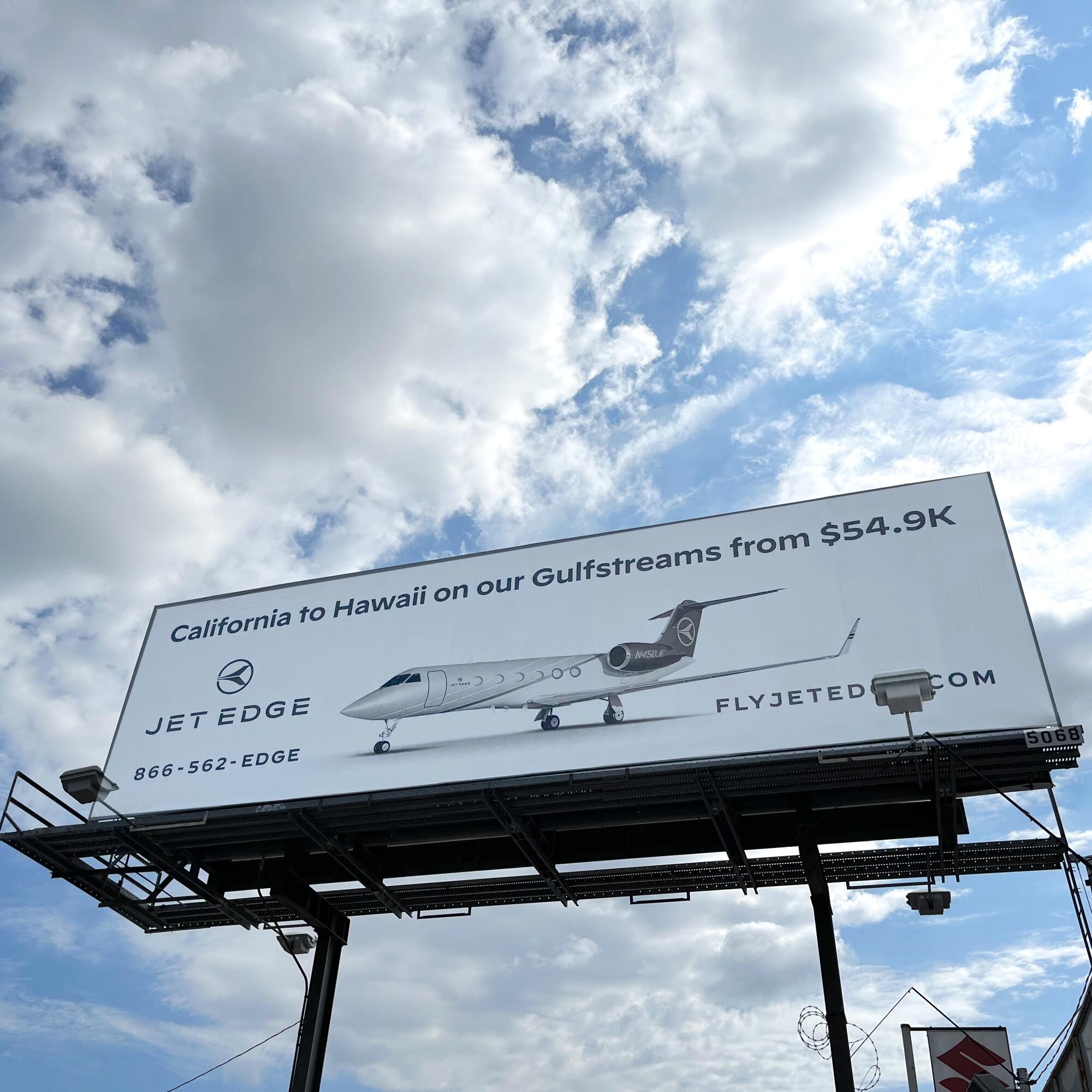
In Los Angeles, the increase has been at least as steep. For the first eight months of 2022, versus that same period in 2021, there was a 17% rise in private jet takeoffs in the greater metropolitan area, according to WingX. The most popular airport for these flights? Van Nuys, which so far this year has accounted for 30% of all private jet operations in L.A., Ventura, Orange and Riverside counties.
A confluence of other factors has also contributed to the trend. In 2017, Santa Monica Airport shortened its runway, which sent jet traffic to other airports. A couple of years later, Gulfstream relocated its maintenance and repair facility from Long Beach Airport to Van Nuys, transferring clientele there as well. In addition, over the last decade, other jet companies have expanded or set up shop at VNY. This has transformed an airport that historically served mostly small piston-engine craft into something else entirely.
“It used to be that during the Oscars, you’d see jets; now there are dozens,” says Steinberg. “There are 737s over there.”
According to VNY’s noise and operations monitoring system, the airport had 46,140 annual jet operations in 2016. By last year, that number had risen to 69,907 — an average of nearly 200 private jet operations in a single day, or one every seven minutes.
A spokesperson for Los Angeles World Airports, which oversees both VNY and LAX, says jets account for just 23% of the airport’s total operations. But that depends on who’s counting. The Federal Aviation Administration tallies an “operation” as an individual takeoff or landing. At VNY, area flight schools practice brief takeoffs and touchdowns, which the FAA counts as two operations. The airport’s noise monitoring system does not. By that measure, jets exceeded piston-engine operations in 11 out of the last 12 months.
Mind you, piston-engine planes are not without sin. They consume leaded fuel, which only began to be phased out at VNY in August. But a jet operation is several orders of magnitude more disruptive when it comes to noise. You can tell by reading noise level advisories published by the FAA, but it doesn’t take a government report. Pay a visit to VNY’s runway observation area — home to one impressively austere playground — and you can hear (and feel) it for yourself.
As one resident put it, the difference between a piston engine and a jet is the difference between a garden lizard and Godzilla.

Super Bowl LVI at SoFi Stadium is bringing in the jet set and charter flights are expected to crowd local airports. Here’s how
Even worse, operations go down at all hours. VNY has a “quieter nights” program, intended to limit takeoffs and landings between 11 p.m. and 7 a.m. — but it is voluntary and routinely ignored. Says Steinberg: “It’s a joke.”
Thomas Materna, a Sherman Oaks resident who sits on the Citizens Advisory Council, a body established in 1985 to help manage the relationship between the airport and surrounding communities, sent me a noise complaint digest summarizing operations at the airport in one 24-hour period in mid-September. It shows private jets of all kinds — Gulfstreams, Embraers, a Dassault Falcon and a Bombardier — taking off at 4:30 a.m., 5:23 a.m., 5:26 a.m., 5:31 a.m., 5:33 a.m., 6:13 a.m., 6:29 a.m., 6:34 a.m., 6:48 a.m., 6:50 a.m., 6:53 a.m. and 6:59 a.m.
“These aren’t just private planes that fly the owner around,” says Materna, “these are charters” — companies such as NetJets that allow a single flier to purchase a leg of a trip or a certain number of flying hours. Some of these function much like commercial flights, with scheduled service to destinations favored by the executive set, such as Sun Valley, Idaho, and Aspen, Colo. (As I type this, Aero is offering a one-way ticket to Los Cabos in Mexico starting at around $2,000.)
Though VNY is not a commercial airport, some by-the-seat charters on certain kinds of aircraft are permitted to operate by the FAA. This has created a loophole, says Suzanne Gutierrez-Hedges, a resident of Lake Balboa.
The de facto result, she says: “It’s turned Van Nuys into a commercial airport.” Gutierrez-Hedges and her neighbors have a favorite expression: “We die so the 1% can fly!”
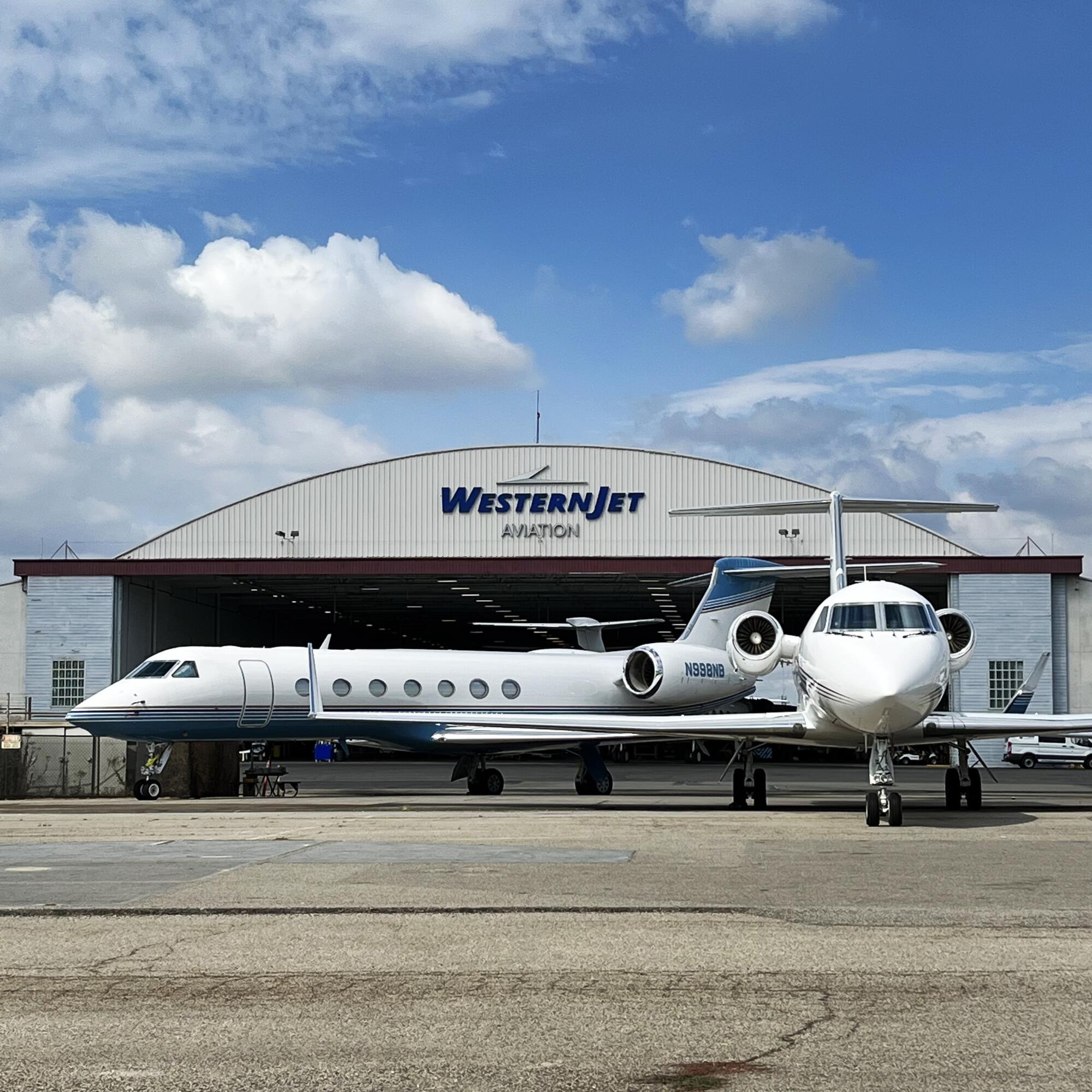
Plane crashes, close calls and pollution prompt residents in Pacoima to call for the closure of Whiteman Airport. Aviation enthusiasts say the airport is critical for training new pilots.
These residents contend, essentially, that public money is being spent to maintain infrastructure that largely benefits the well-to-do — with little thought of or involvement from the public who inhabit the surrounding neighborhoods. Last year, the airport spent $35.5 million to resurface a taxiway; in August, the airport completed a $13.1-million project to improve runways — improvements that will ultimately be enjoyed by the owners of private jets.
Other infrastructure hasn’t kept up as swiftly with the growth. For more than a decade, charter and other private jet operations have expanded along Hayvenhurst Avenue between Sherman Way and Saticoy Street, where old hangars have been demolished and replaced with much larger facilities. This has put flotillas of jets quite literally across the street from the front lawns of Lake Balboa.
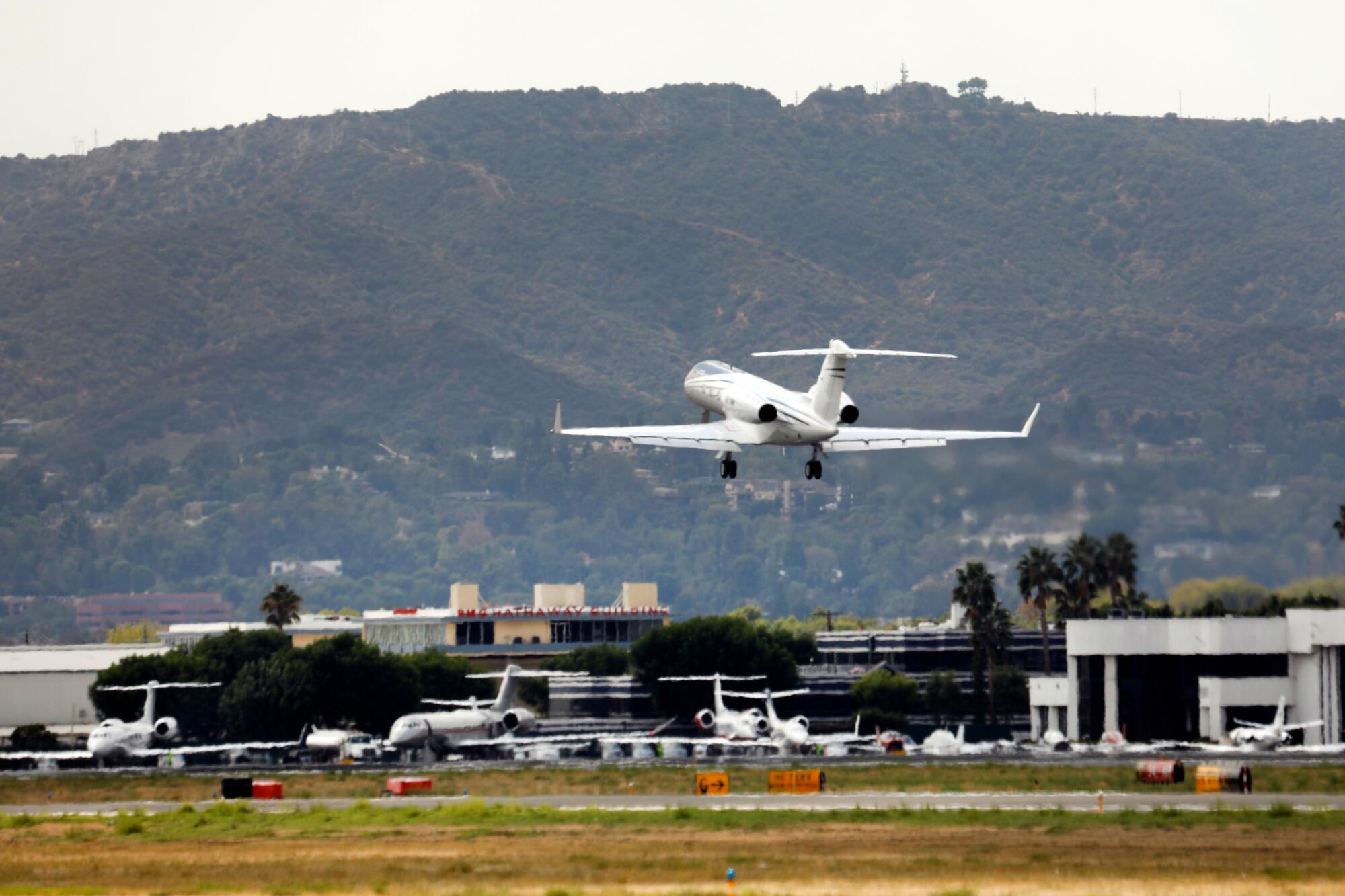
All of this speaks to an airport that is in desperate need of a cohesive planning process — one that specifically takes into account the disruptive nature of jet operations and meets its own stated objective “to adopt land use patterns ... that are mutually compatible between the airport and the surrounding community.” That language comes from VNY’s current master plan, which was released in January 2006 — back when George W. Bush was president, Saddam Hussein was still alive and there were nearly 21% fewer jets permanently based at the airport. (Though area residents had already begun grumbling about them.)
A new master plan is in the works, but its process and timelines are hazy at best. LAWA pointed me to L.A.’s Department of City Planning for details; DCP suggested I check in with LAWA. A spokesperson for LAWA told me that “the 20-year planning horizon is just beginning now” and that “there will be an opportunity for stakeholder and public input.”
Late last month, when she was still on the City Council, Martinez referred a motion to the council’s planning committee to initiate a new planning process for the airport — one that would consider “mitigating noise and other impacts ... including a barrier between the airport and nearby homes.” She also issued a separate motion to the travel and tourism committee to study the regulations around by-the-seat charter operations. These motions could still be acted upon even after Martinez’s departure, though whether that might happen is, at this point, anybody’s guess.
Area residents have some concrete ideas of their own. Gutierrez-Hedges would like to see a real-deal curfew, as well as an air quality study. The Environmental Protection Agency funded an air quality monitoring report on VNY in 2010. A spokesperson for the agency says there are currently no plans to fund any similar studies. The South Coast Air Quality Management District, which conducted the 2010 study on behalf of the EPA, likewise has no updates in the works, according to a representative there. Political pressure could change that.
Steinberg says she would like to see some of the jet operators relocated to more industrial corners of the airport, accompanied by an environmental buffer, or “green zone,” between the residences on Hayvenhurst and the airport. (Given the nature of jet sounds and smells, I’d suggest nothing short of an earthen berm.)
These sentiments were echoed in the wake of Martinez’s motions in impassioned email exchanges between members of VNY’s Citizens Advisory Council and Valley residents, who demanded greater regulation of jet traffic and a more thoughtful urban plan. (Sample excerpt: “The WHOLE VALLEY SHAKES WHEN A JET TAKES OFF OR LANDS!”)
Lonely stations, brutal bus stops — some of Metro’s woes are in the design. Plus, patriarchy gets a pie in the face, in our weekly arts newsletter.
While reporting on this story, I’ve spent ample time online researching airport planning and jet noise — but also studying the culture of flaunting private jet travel online. A regular feature of jet-set Instagram is a requisite selfie either boarding or aboard a private jet. In a June episode of “The Kardashians,” Kim Kardashian took viewers on a tour of her custom-made, cashmere-lined Gulfstream. Earlier this year, the TikTok influencer known as Candy Ken (@candyken69) posted an image showing him and his infant son (@lilblingbling1) not only on a private jet but sitting amid a pile of money.
Private jets are such a status symbol, in fact, that as reported in Los Angeles magazine, there’s a photography set in downtown L.A. designed to look like the interior of a private jet; it’s available for fashion, filming and Instagram shoots. (In case you’re wondering: It’s $49.99 an hour — less if you buy it out for the day.)
Private jet travel produces imagery soaked in the trappings of glamour. Until you begin to consider everything happening just beyond that tiny airplane window.
Architect Tom Wiscombe was placed on administrative leave pending an investigation over how he and other SCI-Arc faculty employed student workers.
Watch L.A. Times Today at 7 p.m. on Spectrum News 1 on Channel 1 or live stream on the Spectrum News App. Palos Verdes Peninsula and Orange County viewers can watch on Cox Systems on channel 99.
More to Read
The biggest entertainment stories
Get our big stories about Hollywood, film, television, music, arts, culture and more right in your inbox as soon as they publish.
You may occasionally receive promotional content from the Los Angeles Times.

